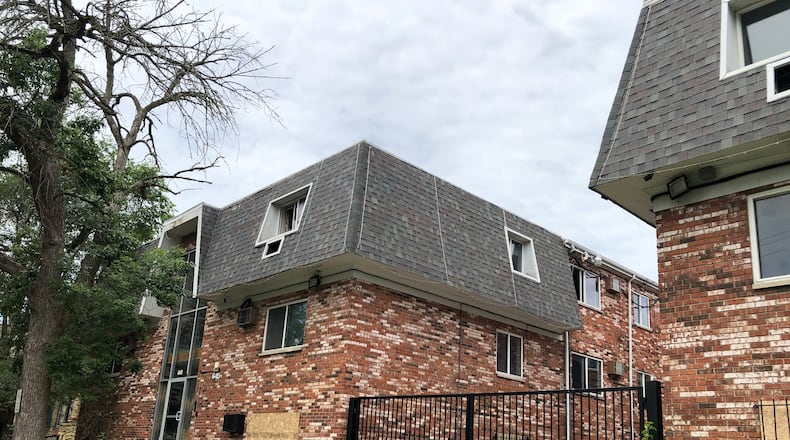Company owner David Lemberg plans to renovate the vacant buildings, including two that were shut down years ago for operating as an illegal hotel, to create 56 new apartments.
The Plan Board denied Lemberg’s development plans earlier this year, and the board was one vote shy of denying his revised plans.
But the board ended up approving the request, with some modifications.
Lemberg and his supporters say the project will turn a nuisance property that has been a crime magnet into a valuable addition.
“Our perseverance with this project is a testament to our commitment to creating something truly unique and special for generations to come,” he said.
Last week, the Dayton Plan Board voted to recommend approval of Lemberg’s zoning map amendment application with some modifications related to parking, green space, a cap on the number of apartment units and other site details.
The case now heads to the Dayton City Commission for final consideration. A public hearing is expected to take place in late September.
Lemberg has spent the better part of a year trying to get to this point.
He first submitted a planned development for 633 and 645 W. Grand Ave. in November, but the Plan Board denied the application in February.
That came after neighbors sharply criticized the plans, raising concerns about parking, aesthetics, safety and other aspects of the site.
Lemberg submitted a new application in June, which included some site changes and added two nearby residential properties.
At a July hearing, board members still had concerns and continued the case until earlier this month to provide the applicant an opportunity to make some additional changes and talk with neighbors.
Last week, Plan Board member Jeff Payne called for a vote to deny the request.
He said he thinks the buildings are hopelessly outdated, the planned development is non-conforming and he accused Lemberg of being unwilling to modify his plan to be more compatible with adjacent land use.
Payne’s motion fell one vote short of passing.
After additional discussion, the board unanimously approved the application, with conditions.
The board said Lemberg’s final plans will require its approval. They are requiring the maximum number of dwelling units to be capped at 56. The project also will have to create a new community room and follow some parking and open space restrictions.
Many speakers at the meeting spoke in favor of the project and praised Lemberg.
Tim Wellman said the Grafton Hill neighborhood is fortunate to have Lemberg as an “asset,” and Edward Hammond said the developer is a trustworthy local investor who is committed to the neighborhood.
Kristine Bertrand, a real estate appraiser and agent, said Dayton has far too many vacant and unused properties.
She said redevelopment projects like this benefit surrounding property values and support economic growth.
But opponents said the buildings are obsolete and poorly designed. Some people have called for demolishing the structures.
Eric Dye, vice president of the Grafton Hill Neighborhood Association, said the buildings have been a nuisance for far too long and he worries this project will negatively impact the neighborhood for many years to come.
“I have seen nothing in these plans to stop this building from being a problem again for future generations,” he said. “I don’t doubt Mr. Lemberg’s intent ― I doubt his ability to be able to execute.”
About the Author

